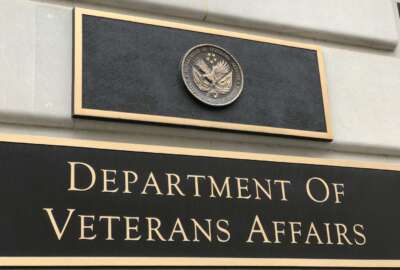A Health Plan Designed For You
Why should federal workers who diet, exercise and have healthy lifestyles have to pay the same health insurance premiums as their overweight, unhealthy office m...
I take good care of myself – exercise, eat well and try to maintain a positive attitude (despite the financial meltdown, dirty politics, the dogs next door that bark night and day, the explosion of reality shows on TV, etc.) toward life and my surroundings.
After my last physical exam the doctor said I had the body of a man 7 months younger than I actually am. Which got me to thinking…
So why should a fine figure of a man such as myself have to pay the same health premiums as someone lacking my health profile. Some duffer who is seven months older, who doesn’t do pushups and who may have half a dozen dependent children?
(I’m just kidding! I’m in a group plan with group rates. I understand the concept. Young subsidize old, old subsidize people having babies, couples subsidize big families, healthy individuals subsidize unhealthy folk, etc.).
But many feds think the government could do more to tailor health plans to individual needs, and to base premiums on age, risk, health, family size, etc.
We outlined some of those questions/complaints in Monday’s column. OPM responded with answers to the questions raised.
In yesterday’s column OPM explained the premium-sharing formula.
Today it answers questions raised in the column starting with a reader who wants to know why married couples should pay the same premiums as a family with 10 kids.
OPM Response:
- We understand some employees are interested in a third enrollment option, self-plus-one, in addition to the current self only and self and family options. We have reviewed the concept of the self-plus-one option and determined it would not be beneficial to our enrollees.
- The FEHB includes both employees and retirees and the premiums for each health plan option reflect the cost and utilization experience of the entire group. The older-age segment of the population tends to use more healthcare services and also tends to have only two members in a self and family enrollment since the children have grown up.
- Therefore, in considering a self-plus-one option, we would need to also consider that annuitants would likely seek to enroll in that option. OPM actuaries estimate that the premium costs for a self-plus-one premium would, therefore, be equal to or possibly more expensive than the current family option. This means the self-plus-one option, which would certainly add to the complexity of program administration, would not be likely to provide any premium savings to enrollees or to the program.
Another reader, a 23-year-old-healthy-as-a-horse guy asked why he should pay the same premiums as his unhealthy, overweight office mates:
OPM Response:
- Each year during Open Season Federal employees and retirees may change their health insurance enrollment to a different health plan that better meets their health care and financial requirements. Every enrollee has at least 10 health plan choices to choose from and most enrollees have many more choices than that. Employees and retirees in the Washington, DC area have 23 plan choices, including high and low option fee-for-service, health maintenance organizations, consumer driven health plans, and high deductible health plans.
- Many Federal employees choose lower option, consumer driven, or high deductible health plans that contain lower premiums and benefit features that encourage healthy lifestyles. Many HMOs and fee-for-service plans are adding features that promote preventive care and care management programs that help people with health problems better manage their illnesses.
- During the annual open season, OPM provides enrollees with a wealth of information to help them select the health plan that best meets their needs. Paper and online program guides with selection tools providing price, benefits, plan quality, provider participation, consumer satisfaction survey results, etc. are among the tools available to consumers.
- Open Season begins November 10 and runs through December 8, 2008.
Nearly Useless Factoid
According to Unnecessary Knowledge, the most popular name for a pet in the United States is Max.
To reach me: mcausey@federalnewsradio.com
Copyright © 2024 Federal News Network. All rights reserved. This website is not intended for users located within the European Economic Area.





